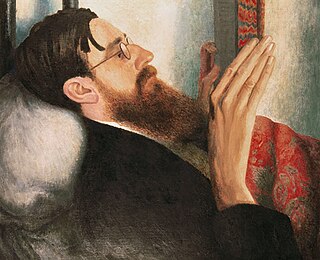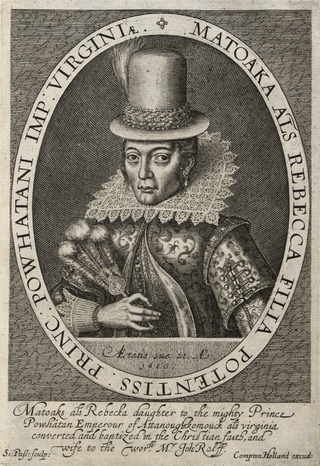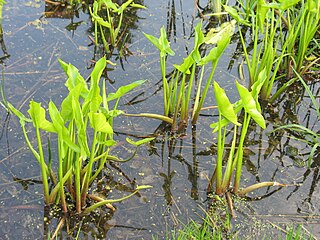
The Bloomsbury Group or Bloomsbury Set was a group of associated English writers, intellectuals, philosophers and artists in the early 20th century. Among the people involved in the group were Virginia Woolf, John Maynard Keynes, E. M. Forster, Vanessa Bell, and Lytton Strachey. Their works and outlook deeply influenced literature, aesthetics, criticism, and economics, as well as modern attitudes towards feminism, pacifism, and sexuality.

Roanoke Colony was an attempt by Sir Walter Raleigh to found the first permanent English settlement in America. The colony was founded in 1585, but when it was visited by a ship in 1590, the colonists had inexplicably disappeared. It has come to be known as the Lost Colony, and the fate of the 112 to 121 colonists remains unknown.

Giles Lytton Strachey was an English writer and critic. A founding member of the Bloomsbury Group and author of Eminent Victorians, he established a new form of biography in which psychological insight and sympathy are combined with irreverence and wit. His biography Queen Victoria (1921) was awarded the James Tait Black Memorial Prize.

Virginia Dare was the first English child born in an American English colony.
This article contains information about the literary events and publications of 1612.

Pocahontas was a Native American woman belonging to the Powhatan people, notable for her association with the colonial settlement at Jamestown, Virginia. She was the daughter of Powhatan, the paramount chief of a network of tributary tribes in the Tsenacommacah, encompassing the Tidewater region of what is today the U.S. state of Virginia.

Peter Heylyn or Heylin was an English ecclesiastic and author of many polemical, historical, political and theological tracts. He incorporated his political concepts into his geographical books Microcosmus in 1621 and Cosmographie (1657).

Sea Venture was a seventeenth-century English sailing ship, part of the Third Supply mission flotilla to the Jamestown Colony in 1609. She was the 300 ton flagship of the London Company. During the voyage to Virginia, Sea Venture encountered a tropical storm and was wrecked, with her crew and passengers landing on the uninhabited Bermuda. Sea Venture's wreck is widely thought to have been the inspiration for William Shakespeare's 1611 play The Tempest.
William Strachey was an English writer whose works are among the primary sources for the early history of the English colonisation of North America. He is best remembered today as the eye-witness reporter of the 1609 shipwreck on the uninhabited island of Bermuda of the colonial ship Sea Venture, which was caught in a hurricane while sailing to Virginia. The survivors eventually reached Virginia after building two small ships during the ten months they spent on the island. His account of the incident and of the Virginia colony is thought by most Shakespearean scholars to have been a source for Shakespeare's play The Tempest.

Chorography is the art of describing or mapping a region or district, and by extension such a description or map. This term derives from the writings of the ancient geographer Pomponius Mela and Ptolemy, where it meant the geographical description of regions. However, its resonances of meaning have varied at different times. Richard Helgerson states that "chorography defines itself by opposition to chronicle. It is the genre devoted to place, and chronicle is the genre devoted to time". Darrell Rohl prefers a broad definition of "the representation of space or place".
Powhatan or Virginia Algonquian was an Eastern Algonquian subgroup of the Algonquian languages. It was formerly spoken by the Powhatan people of tidewater Virginia. Following 1970s linguistic research by Frank Thomas Siebert, Jr., some of the language has been reconstructed with assistance from better-documented Algonquian languages, and attempts are being made to revive it.
The Chesepian or Chesapeake were a Native American tribe who lived near present-day South Hampton Roads in the U.S. state of Virginia. They occupied an area which is now the Norfolk County or Princess Anne County.
The Patawomeck are a Native American tribe based in Stafford County, Virginia, along the Potomac River. Patawomeck is another spelling of Potomac.
The Eno or Enoke, also called Stuckenock, was an American Indian tribe located in North Carolina during the 17th and 18th centuries that was later absorbed into the Catawba tribe in South Carolina along with various other smaller tribal bands.

The Generall Historie of Virginia, New-England, and the Summer Isles is a book written by Captain John Smith, first published in 1624. The book is one of the earliest, if not the earliest, histories of the territory administered by the London Company.

Carolina Algonquian was an Algonquian language of the Eastern Algonquian subgroup formerly spoken in North Carolina, United States.

Peltandra virginica is a plant of the arum family known as green arrow arum and tuckahoe. It is widely distributed in wetlands in the eastern United States, as well as in Quebec, Ontario, and Cuba. It is common in central Florida including the Everglades and along the Gulf Coast. Its rhizomes are tolerant to low oxygen levels found in wetland soils. It can be found elsewhere in North America as an introduced species and often an invasive plant.

The Dare Stones are a series of stones inscribed with messages supposedly written by members of the lost Roanoke Colony, allegedly discovered in various places across the Southeastern United States in the late 1930s. The colonists were last seen on Roanoke Island, off the coast of what is now North Carolina, in August 1587, and the mystery of their disappearance has since become a part of American folklore. The stones created a media circus in the United States, as the public became fascinated with the possible resolution of the Lost Colony's fate.
The literature of Virginia, United States, is literature produced by, written within or pertaining to the American state of Virginia which is situated on the eastern coast of the US. Including fiction, non-fiction, poetry, prose, letters, travel diaries, logs, drama, belles-lettres and journalistic writing, Virginian literature has evolved and developed from pre-colonial settlement to the modern day. Virginian literature was influenced in its early years by the English establishment of the Jamestown Colony in 1607 in the Chesapeake Bay area. Literature of the region was later characterised by the Antebellum period, civil war, reconstruction, and slavery. Representative authors include James Branch Cabell, Ellen Glasgow, William Hoffman, Lee Smith, Carolyn Kreiter-Foronda and William Styron. Literary journals include The Virginia Quarterly Review and The Red Brick Review of Virginia State University.
Tackonekintaco was a 16th and 17th-century leader of the Warraskoyack tribe of the Powhatan Confederacy, in what is now the U.S. state of Virginia.












